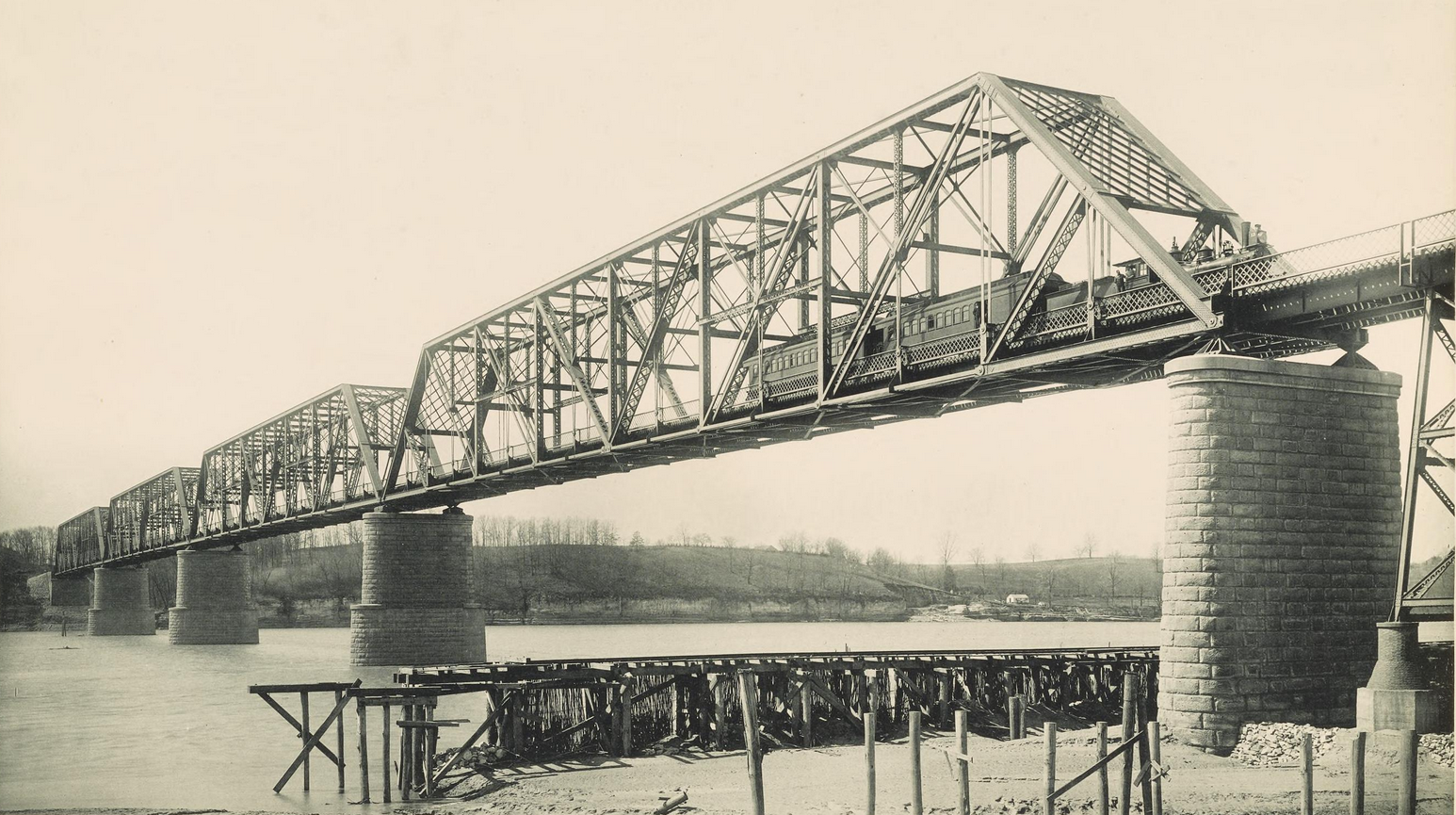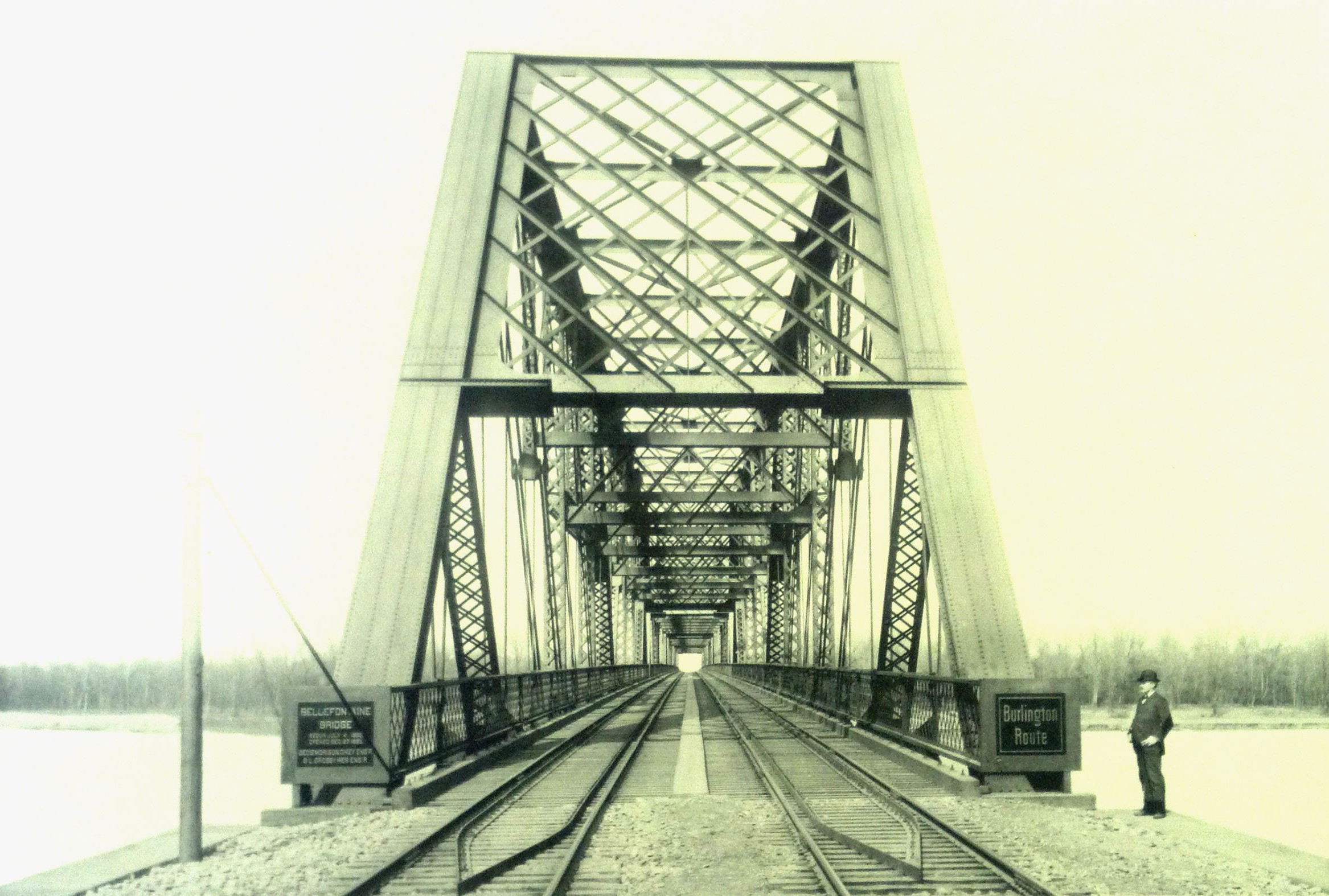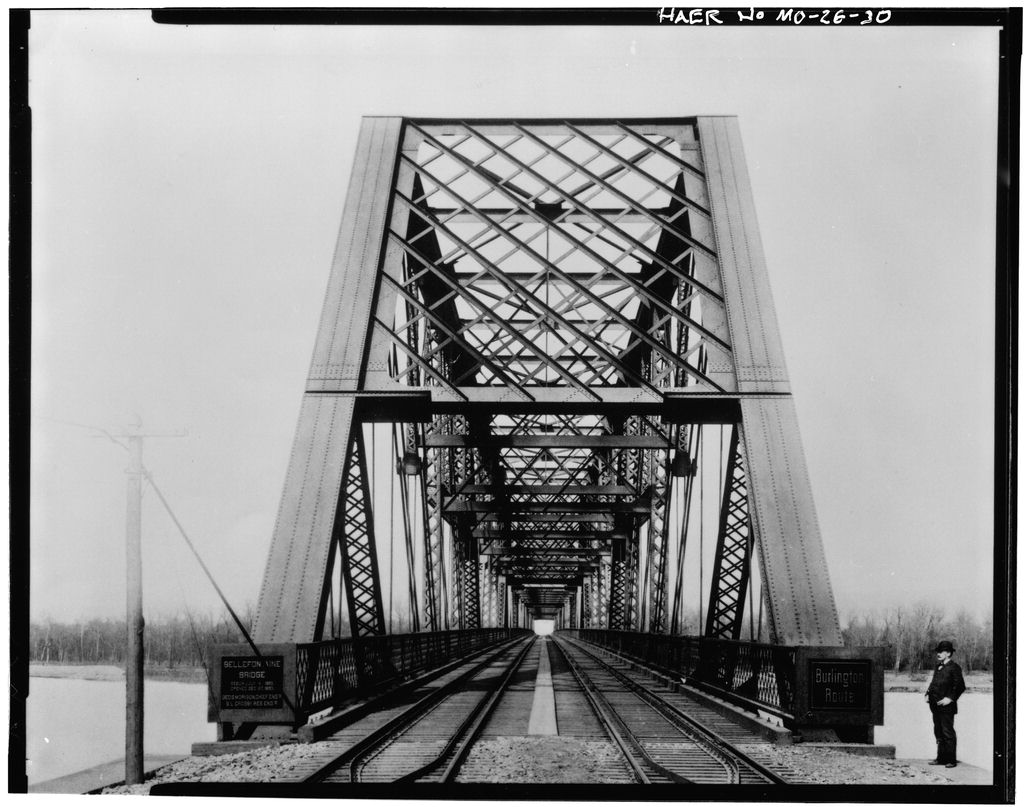View an article regarding the construction of this bridge.
The beautiful Bellefontaine Bridge crosses the Missouri River near it's mouth, parallel to US-67. In fact, it is actually the last railroad bridge across the Missouri River.
The bridge features four massive pin connected Baltimore Through Truss spans. George S. Morison, well renounced for his steel trusses designed a number of large bridges which used Whipple designs, and eventually graduated to Baltimore truss designs.

Historic photo of the bridge, from the above article
This bridge was one of the first to use a Baltimore design. The nearby Merchants Bridge used a Pennsylvania Through Truss design, and was completed just a couple years earlier. Morison engineered this structure as well.
This bridge features 16-Panel spans, considerably longer than usual. These spans were built to double track standards. Originally, the bridge featured a long deck girder viaduct approach, built by A&P Roberts Company/Pencoyd Iron Works. However, this would be replaced in 2013 by a modern deck girder approach, with concrete jump spans.
This modern approach was built to single track standards. It is unknown if the double track is not needed, or if the main spans can no longer hold the load of double tracked bridge.
The historic substructures of this bridge are of stone construction, while the newer ones are made of concrete.

Historic photo of the bridge, from the above article
Taking approximately a year to complete, the bridge was one of the signature structures along the Chicago, Burlington & Quincy line.
The author has ranked this bridge as being highly significant, due to the age of the bridge, as well as the revolutionary design.
The photo above is an overview. The photo below is looking across the bridge. The below photos come from the Historic American Engineering Record.
| Upstream | St. Charles Rail Bridge |
| Downstream | Confluence With Mississippi River |

